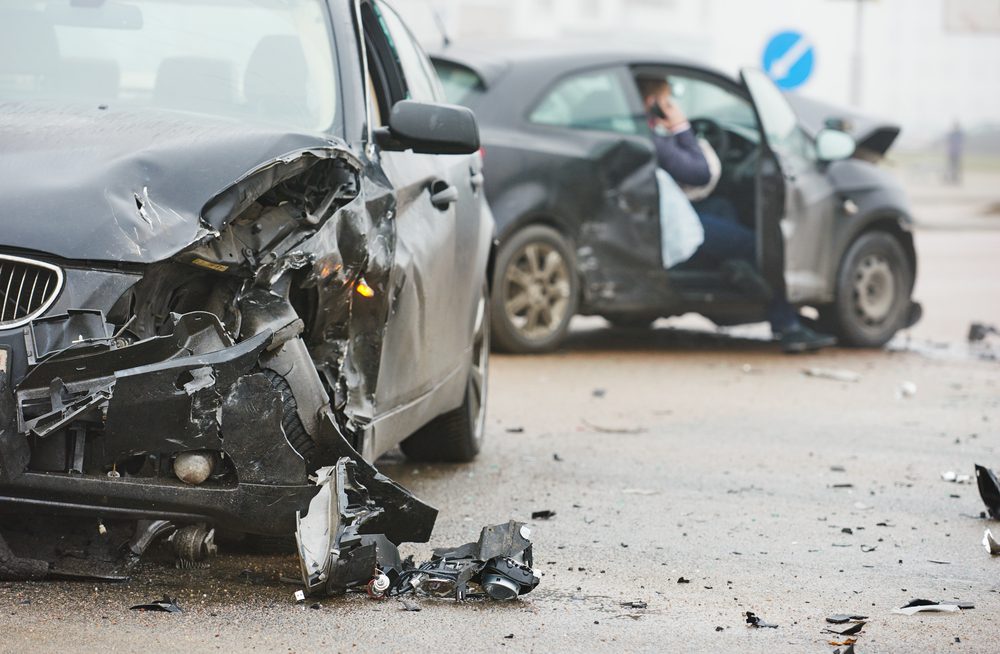Auto Accident Attorneys: The Near Miss Statute
In this post, we’ll discuss the definition of a near-miss incident, how it differs from an accident, and why it’s essential for understanding road safety and motor vehicle safety .
What Is A Near Miss?
The Occupational Safety and Health Administration defines near miss as “incidents in which no property was damaged and no personal injury was sustained, but where, given a slight shift in time or position, damage or injury easily could have occurred.” A few concrete examples include:
- Dozing off at the wheel and waking up just in time to avoid drifting,
- Swerving to avoid debris on the road, and
- Texting-while-driving, almost rear-ending someone merging ahead.
What Is The Difference Between a Near Miss and an Accident?
An accident is an incident in which property was damaged or physical injury occurred. A near-miss, by definition, involves no property damage or injury.
One may question the utility of a near-miss statistical analysis; after all, the word miss denotes no accident, no bodily harm or damage to one’s property. Just because you woke up in the nick of time to forestall slamming into a guardrail, it doesn’t mean you should continue to drive drowsy. In fact, according to a National Public Radio report on young physicians driving after a 24-hour shift, their near-miss accident risk increases by 460% (and risk of an actual car crash increases by 168%). Drunk-driving PSAs are omnipresent on highway billboards and television ads, but the unsung cause of over 6,400 fatalities per year is driving while fatigued.
Arming oneself with knowledge about less intuitive catalysts contributing to near-miss accidents (and car accidents themselves) is essential to safe driving.
Factors Contributing to Near Miss Incidents in Colorado
As any Coloradoan knows, drivers out here tend to be particularly hard to predict. Factors contributing to near-miss accidents in the Centennial State include:
- Seasonality: Inclement weather in the fall and winter months like rain, snow, and hail all increase the likelihood of getting in an accident.
- Daylight Savings Time: The morning after Daylight Savings, Coloradans’ circadian rhythms are disrupted writ large. Everyone loses an hour of sleep they’ll never get back, and the angle of the sun on the horizon changes from the day before. Sleep-deprived, late-for-work 9-5ers are a recipe for reckless driving and accidents galore.
- Location: Due to urban design and popular commuting routes, certain road corridors in the Denver metro area can become hotspots for motor vehicle accidents and near-miss incidents. Colorado Boulevard, Santa Fe Drive, and I-25 are particularly congested at rush hour and require their drivers’ full attention.
- Car Condition: Do you have a cracked windshield? Are you out of wiper fluid? Did you thoroughly scrape ice off your windshield in below-freezing temperatures, or complete a rush-job to get back into your warm car as quickly as possible?
What To Do If Your Vehicle Begins To Skid
As we enter the winter season here in Colorado, seasonality becomes on of the most important risk factors, as falling snow and freezing temperatures can contribute to icy road conditions. It’s important that you know what to do if you find yourself in a dangerous situation on the winter roads.
If your vehicle begins to skid, you should follow these steps to regain control and keep yourself and others safe:
- Take your feet off the pedals. Don’t brake, and don’t accelerate.
- Turn the steering wheel in the direction you want to go.
- As the vehicle turns back, steer in the other direction to stop turning and return to your path of travel.
- Don’t jerk the steering wheel! You don’t want to overcorrect. That could cause the car to fishtail.
Depending on road conditions and why your car started to skid, you may want to remember condition-specific tips as well.
What To Do After A Near Miss Accident in Colorado
Follow these steps to stay safe and document the scene following a near-miss incident:
- Be Safe: After the accident, your number one priority should be getting to a safe place. Once your vehicle is off the road, it’s less likely rubber-necking drivers will hit you.
- Call the Police: Call 911 and tell the police you were hit by another vehicle that fled the scene. Give the police as much information as possible.
- Find Witnesses: Anyone who saw the accident is a potential witness who can provide you with important details about the other vehicle. Asking them to write a brief statement could help you and the police department. At the very least, get the witness’s name and phone number.
- Take Photos and Videos: Using your cell phone, take photos and videos of the scene of the accident and the damage to your car. These can help the police with their investigation.
Contact Rocky Mountain Personal Injury Lawyers For Near-Miss Auto Accident Help
Have you been in a near-miss accident or injured in Colorado and you want to explore your legal options? Call Attorney Brett Buchheit and the team at Rocky Mountain Personal Injury Lawyers to talk to us about your case and options.


